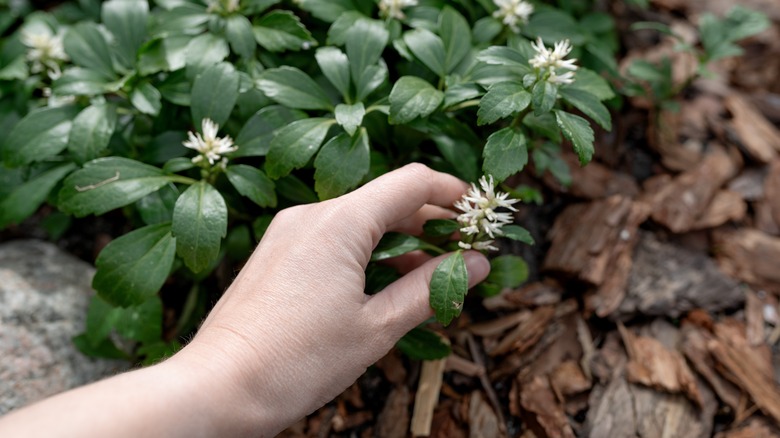How To Get Rid Of Pachysandra If You've Mistakenly Planted It
We may receive a commission on purchases made from links.
Japanese Pachysandra (Pachysandra terminalis) is notoriously annoying to remove from yards and gardens, which is unfortunate, since this pretty but often invasive evergreen remains a relatively popular ground cover choice for shady locations. If you or your home's previous owners made the mistake of planting Japanese Pachysandra, it's best to begin work on removing it to prevent the plant from spreading and escaping into natural spaces. While tedious, removing Japanese Pachysandra and replacing it with a more appropriate native or non-invasive shade loving ground cover isn't impossible. If you are only dealing with a small patch of Pachysandra, you may be able to simply dig it up or smother it with a tarp, though for larger Pachysandra problems some use of herbicides may be necessary.
It's understandable why Japanese Pachysandra became such a popular plant in zones 4 through 9, but the same spreading rhizomes that make Japanese Pachysandra loved as a ground cover, also make it extremely frustrating to remove, as Pachysandra can quickly grow back if you fail to remove some of the roots. Fortunately though, Pachysandra roots are relatively shallow, so as long as you aren't dealing with an especially large patch, you may be able to dig out and remove your unwanted Pachysandra.
Killing and removing Pachysandra
If you don't want to try digging up your Pachysandra or it keeps growing despite your attempts to remove all the rhizome fragments, another option is to try smothering it. First cut back as much of the plant as you can, then spread a tarp, like the Guard Shield Black Tarp, over the garden bed where the Pachysandra is growing and secure the tarp in place. After about three months, the Pachysandra should be dead thanks to the lack of sunlight and the heat from the tarp. While not the most attractive solution in the short-term, this can save you the back pain of digging up the plants and is a clever way to repurpose an old tarp. If you don't have a tarp handy, cardboard can also be used to smother weeds.
If smothering or digging up your Pachysandra has not been successful, then you may need to consider using herbicides. Unfortunately, the herbicides that work best against Pachysandra tend to be systemic herbicides that will also damage or kill most other plants in your garden. Be sure to follow all directions on the herbicide label carefully and avoid overspraying if you end up having to use this method. Regardless of the method or combination of methods you use, be sure to check the area regularly for any regrowth of your Pachysandra. If you find yourself missing this ground cover, consider growing its North American relative Allegheny Pachysandra (Pachysandra procumbens) in its place.

